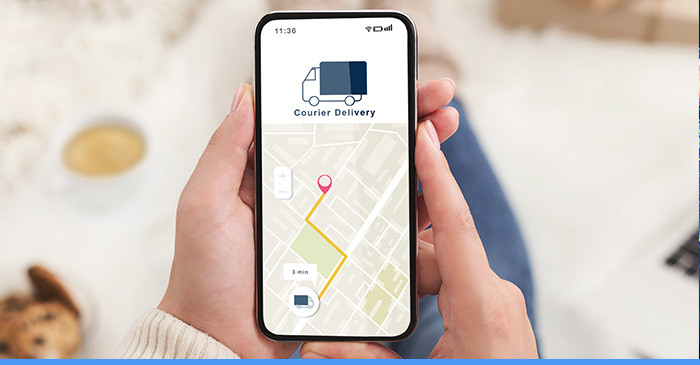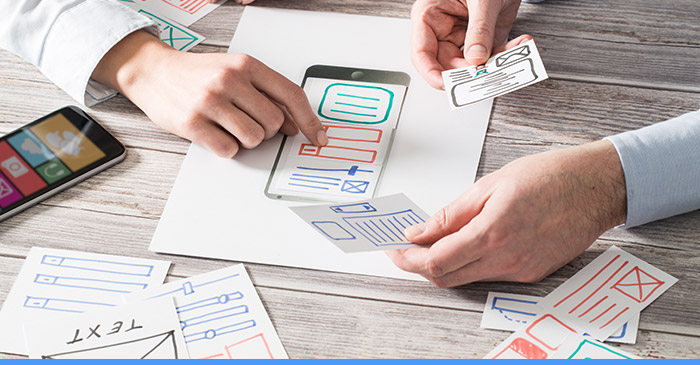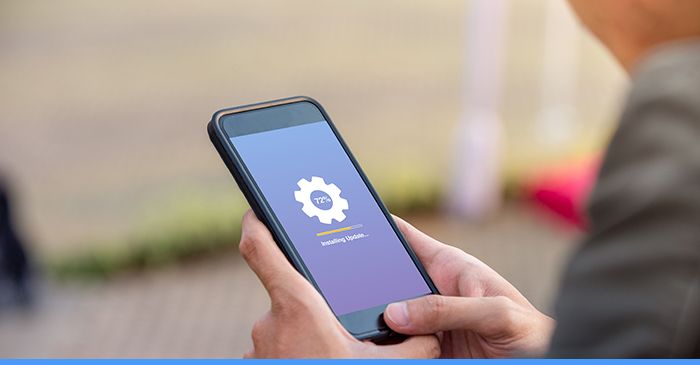
Logistics is the process of planning, implementing, and controlling the movement of goods, services, and information from one place to another. It plays a crucial role in ensuring that products are delivered to their intended destinations promptly and cost-effectively. Logistics has become more complex and challenging in today’s fast-paced business world. That’s why logistics app development has become increasingly important in recent years.
Logistics applications, or logistics apps, are software tools that help streamline and automate the logistics process. They can manage everything from inventory and warehouse management to transportation and delivery. With the help of logistics apps, businesses can improve their efficiency, reduce costs, and provide better customer service.
This guide will provide tips and tricks for logistics app development in 2023.
Logistics App Development: Key Steps
Market Research
Market research is a critical first step in logistics app development. It involves analyzing the current market and identifying the need for logistics applications. Market research allows businesses to gain valuable insights into their target audience, competitors, and industry trends.
One of the key drivers of the logistics app industry is the growth of e-commerce. With more and more consumers shopping online, there is a greater demand for efficient and reliable logistics solutions. This has led to an increase in the number of logistics apps available on the market.
To conduct effective market research for logistics app development, businesses should start by identifying their target audience. They should then analyze the behavior and preferences of their target audience to determine what features and functionalities they would expect from a logistics app.
In addition, it’s important to identify key players in the logistics app industry. This includes both established companies and new startups. By analyzing the strategies and successes of these key players, businesses can gain valuable insights into what works and what doesn’t in the logistics app industry.
Planning & Design

Planning and design are critical stages in logistics app development. Before beginning development, it’s important to clearly understand the app’s purpose, target audience, and key features. This can be achieved through careful planning and designing.
One of the key elements of app design is the user interface (UI). The UI is the visual representation of the app and includes things like buttons, icons, and color schemes. A well-designed UI should be intuitive, easy to navigate, and visually appealing.
Another important element of app design is the user experience (UX). The UX refers to users’ overall experience while using the app. A good UX should be seamless and user-friendly, making it easy for users to complete tasks and achieve their goals.
Finally, functionality is another crucial element of app design. This refers to the app’s features and how they work together to provide a useful and efficient logistics solution.
Development
Logistics app development requires a solid understanding of the technical requirements involved. This includes choosing the right development platform, programming language and integrating the necessary features.
One of the key technical requirements for logistics app development is handling large amounts of data. Logistics apps often require real-time tracking and monitoring of shipments and deliveries, which means that they need to be able to handle and process large amounts of data quickly and efficiently.
Another important technical requirement is security. Logistics apps handle sensitive information like customer data, order information, and financial transactions, meaning they must be secure and protected against threats like hacking or data breaches.
In terms of features, several key elements must be included in a logistics app. These include real-time tracking and monitoring of shipments, order management, inventory management, and integration with other logistics and transportation systems.
When choosing a development platform and programming language for a logistics app, it’s important to consider factors like scalability, flexibility, and cost-effectiveness. Popular development platforms for logistics apps include Android, iOS, and web-based applications. Popular programming languages include Java, Swift, and Python.
Read more: Unlock Efficiency with a Dedicated Development Team
Testing & Deployment
Testing ensures that the app functions properly and meets the users’ needs. Before deploying the app, it is important to test it thoroughly to identify bugs, errors, or issues.
Different types of testing should be conducted to ensure the app is high quality. These include functional testing, usability testing, compatibility testing, performance testing, and security testing. Functional testing checks whether the app performs the intended functions without errors, while usability testing checks how easy the app is to use. Compatibility testing checks if the app works on different devices and operating systems, while performance testing checks the app’s speed and response times. Security testing ensures that the app is protected against hacking or data breaches.
Once the testing is completed, it’s time to deploy the app to different stores. This involves submitting the app to the app store for review and approval. The app store may have specific guidelines and requirements to be met before the app can be approved for distribution. Once the app is approved, it can be available for download by users.
In addition to the app stores, businesses may need to deploy the app to their servers or cloud platforms. This requires careful planning and execution to ensure the app is available and accessible to users at all times.
Maintenance & Updates

Maintenance and updates are essential for ensuring that a logistics app continues to function optimally and meet the needs of its users. Regular maintenance and updates help to fix bugs and errors, improve performance, and add new features and functionalities to the app.
Different types of maintenance and updates should be conducted regularly. These include:
- Bug fixes: Bugs are errors or flaws in the app that can cause it to malfunction or crash. Regular bug fixes ensure that the app runs smoothly without any errors.
- Performance updates: Performance updates help to optimize the app’s speed, response time, and overall performance. This is important to ensure that the app runs smoothly and efficiently.
- Security updates: Security updates help to protect the app from hacking, data breaches, and other security threats. These updates ensure that the app remains secure and protects user data.
- Feature updates: Feature updates add new functionalities and features to the app. This is important to keep the app relevant and up-to-date with the changing needs of the users.
Monetization Strategies
There are several ways to monetize a logistics app, including:
- In-app advertising: This involves displaying ads within the app. This can be a source of revenue for the app developer.
- Subscription model: This involves charging users a subscription fee to access premium features of the app.
- Commission-based model: This involves taking a percentage of the revenue generated by the transactions made through the app.
- Freemium model: This involves offering a basic version of the app for free but charging for access to advanced features.
Successful monetization strategies in the logistics app industry include:
- Uber Freight: This logistics app charges a commission fee for every shipment booked through the app.
- Convoy: This app uses a commission-based model, charging a percentage of the total shipment value.
- Cargomatic: This app charges a fee for each shipment booked through the app and offers premium features through a subscription model.
By choosing the right monetization strategy, businesses can generate revenue and ensure the sustainability of their logistics app.
Conclusion
In conclusion, logistics app development is a complex process that requires careful planning, design, development, testing, deployment, maintenance, and updates. A successful logistics app should have user-friendly interfaces, advanced features, and effective monetization strategies. Following the steps outlined in this article, businesses can create powerful logistics applications that streamline operations and increase revenue.
At Arturo Digital, we specialize in making mobile applications, including logistics apps. If you want to create a logistics app for your business, contact us today, and let us help you bring your vision to life.
Read more: Zen in Your Pocket: Learn How to Make A Meditation App